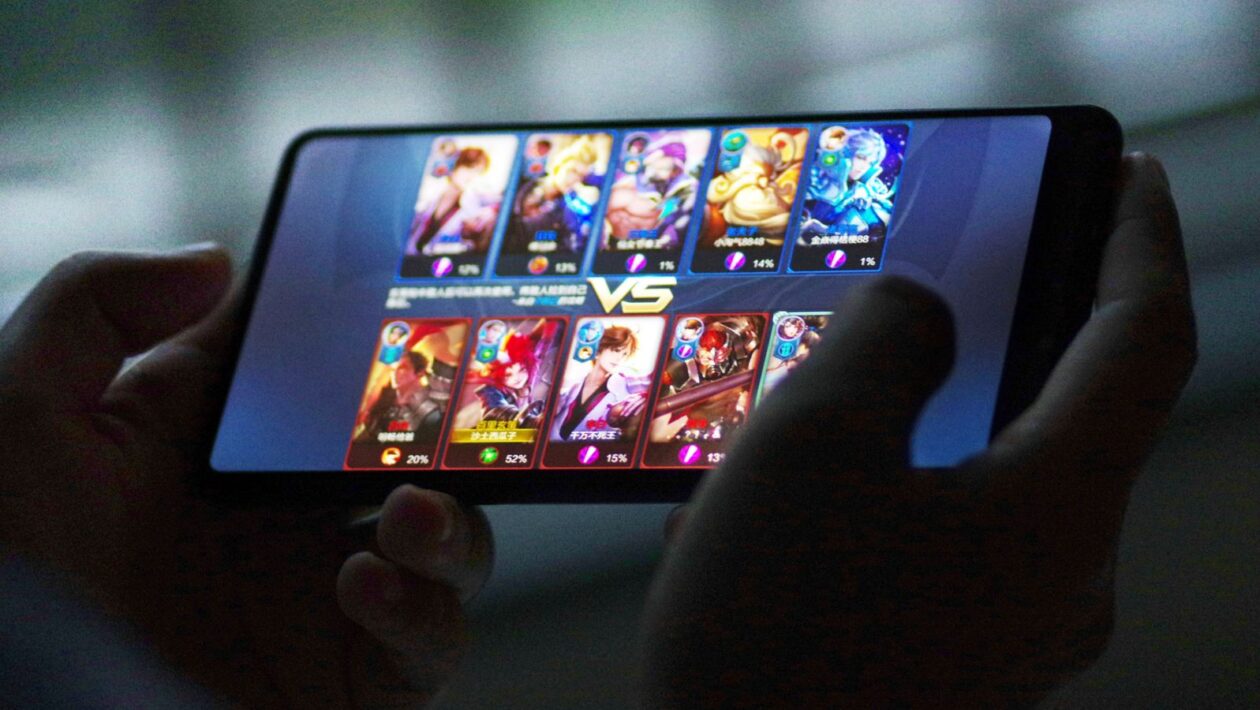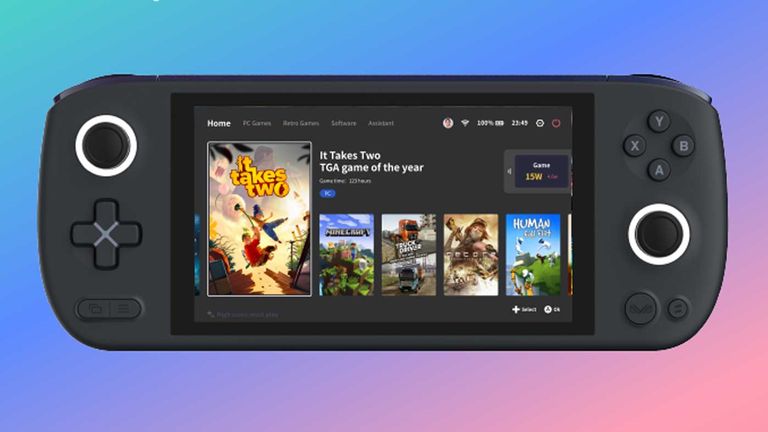[ad_1]
Video game consoles are getting bigger and bigger.
The original launch version of the PlayStation 5 weighs 4.5kg, nearly twice that of its predecessor (2.8kg).
The Xbox Series X was so big that many on the internet joked it was the size of a mini-fridge – which led Microsoft to manufacture an actual console-shaped mini-fridge.
But as technology progresses, it inevitably gets miniaturised as more battery, processing power and memory are crammed into smaller phone or laptop chassis.
The same applies to video games.
Nintendo blazed the trail of handheld hybrid gaming when it released the Switch, which became the fastest home console to reach 100 million units sold in 2021.
Its ability to act as a traditional TV console and portable attracted customers faster than they could be manufactured.
Now, competitors such as the Steam Deck are breaking into the market of portable gaming, boasting better graphics cards, storage, and processors.
One company that launched its portable PC over the summer is Aya.
The Chinese firm’s flagship Neo Air Pro boasts up to a hefty 30GB of RAM, decent battery time and a graphics card powerful enough to run the latest blockbuster games on your commute.
When Sky News tested it, games such as Overwatch, Call Of Duty and FIFA held up well on lower graphics settings at 60 frames per second. The unit also has a USB-C output, making it possible to connect to a physical keyboard, mouse, and monitor and turning this supercharged Game Boy into a desktop gaming PC.
Will video games get their own Netflix?
But mobile phones are also getting a gaming glow-up.
The advent of game streaming, similar to Netflix, allows players to run the most graphically intensive releases on the market on a mid-range smartphone.
Where your iPhone might traditionally have been used to play classics like Clash Of Clans or Farmville, it can now stream massive PlayStation or Xbox games with nothing but a 5G connection.
Xbox, PlayStation, and Google (for now, at least) offer cloud streaming services allowing gamers to play supported games over the internet.
Sky News tested the Xbox cloud streaming app installed on Oppo’s flagship folding smartphone, the Find N.
The phone’s OLED screen (produced by the same manufacturer that builds Samsung’s foldable displays), folds out to double its original screen size, vastly improving the gaming experience on the go.
Using a stable EE 5G connection, we were able to stream Forza Horizon 5, one of the most graphically demanding games on the market, with little to no latency.
As broadband and data speeds improve in the UK, cloud gaming could become the medium of choice for players.
However, the format recently took a hit when Google announced it was shutting down its Stadia service.
It was one of the first such services to launch in the UK, but failed to generate enough interest with players to be continued by the Silicon Valley giant.
Read more tech news:
We spoke to Google’s latest AI chatbot
The future of Twitter under Elon Musk
‘Cloud gaming is the future’
Mike Rose, founder of No More Robots, a game publisher that recently had to scrap its Stadia version of the title Soccer Story, told Sky News: “I think the writing had been on the wall for a while… it was pretty obvious it was going to die at some point. It was more a question of when.
“I’m pretty confident cloud gaming is going to be the future of video games.”
Mr Rose said cloud services like Xbox are more likely to survive because they have a more diversified offering: “The problem that Stadia had, was that it was trying to start an entire new store that focused entirely on cloud, instead of letting people take up cloud gaming bit by bit.”
In a vote of confidence, No More Robots have around half a dozen titles coming to Microsoft’s xCloud over the next 12 months.
According to the government, 68% of UK premises now have access to gigabit-capable broadband, with a target of reaching at least 85% gigabit-capable coverage across the country by 2025.
How quickly people adopt the ever-growing offering of Netflix-like cloud gaming services will depend greatly on whether infrastructure targets like this are met.
[ad_2]



